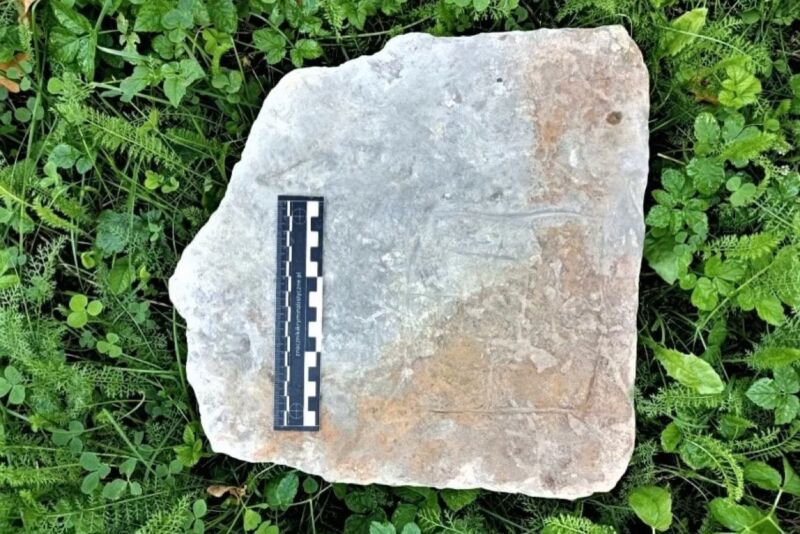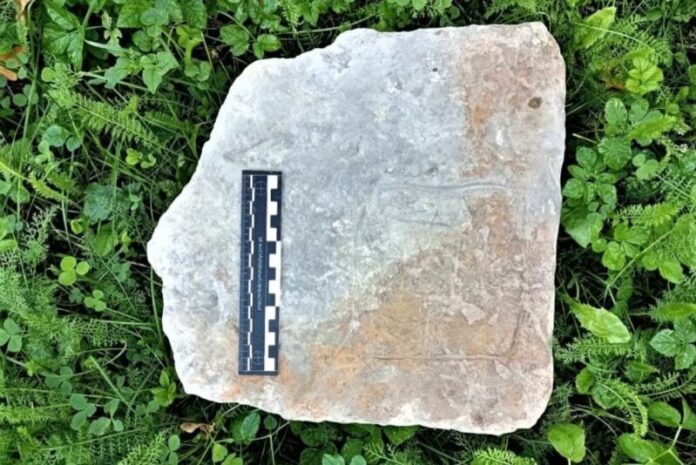
Enlarge / Archaeologists excavating the ruins of an early 16th-century Polish castle discovered a carved strategy board game called Mill. (credit: Tomasz Olszacki)
Some 500 years ago, construction workers in the midst of building Ćmielów Castle in Poland carved a simple game board into a slab of the sandstone floor as a diversion for their leisure time. At least that's one possible scenario for the existence of a game board recently discovered by archaeologists in the castle ruins; it's also possible the board could have been carved by children or by servants after the castle was completed, or it may have been meant as a symbolic message.
As previously reported, there is archaeological evidence for various kinds of board games from all over the world dating back millennia: Senet and Mehen in ancient Egypt, for example, or a strategy game called ludus latrunculorum ("game of mercenaries") favored by Roman legions. A 4,000-year-old board discovered last year at an archaeological site in Oman's Qumayrah Valley might be a precursor to an ancient Middle Eastern game known as the Royal Game of Ur (or the Game of Twenty Squares), a two-player game that may have been one of the precursors to backgammon (or was simply replaced in popularity by backgammon). Like backgammon, it's essentially a race game in which players compete to see who can move all their pieces along the board before their opponent.
This latest discovery isn't quite as old as that in terms of the actual carved board, but the game could be just as ancient. According to archaeologist Tomasz Olszacki, it's a two-person strategy board game called Mill, also known as Nine Men's Morris, Merels, or "cowboy checkers" in North America. The earliest-known Mill game board was found carved into the roofing slabs of an Egyptian temple at Kurna, which likely predates the Common Era. Historians believe it was well-known to the Romans, who may have learned of the game through trade routes.
Read 4 remaining paragraphs | Comments
Ars Technica - All contentContinue reading/original-link]




